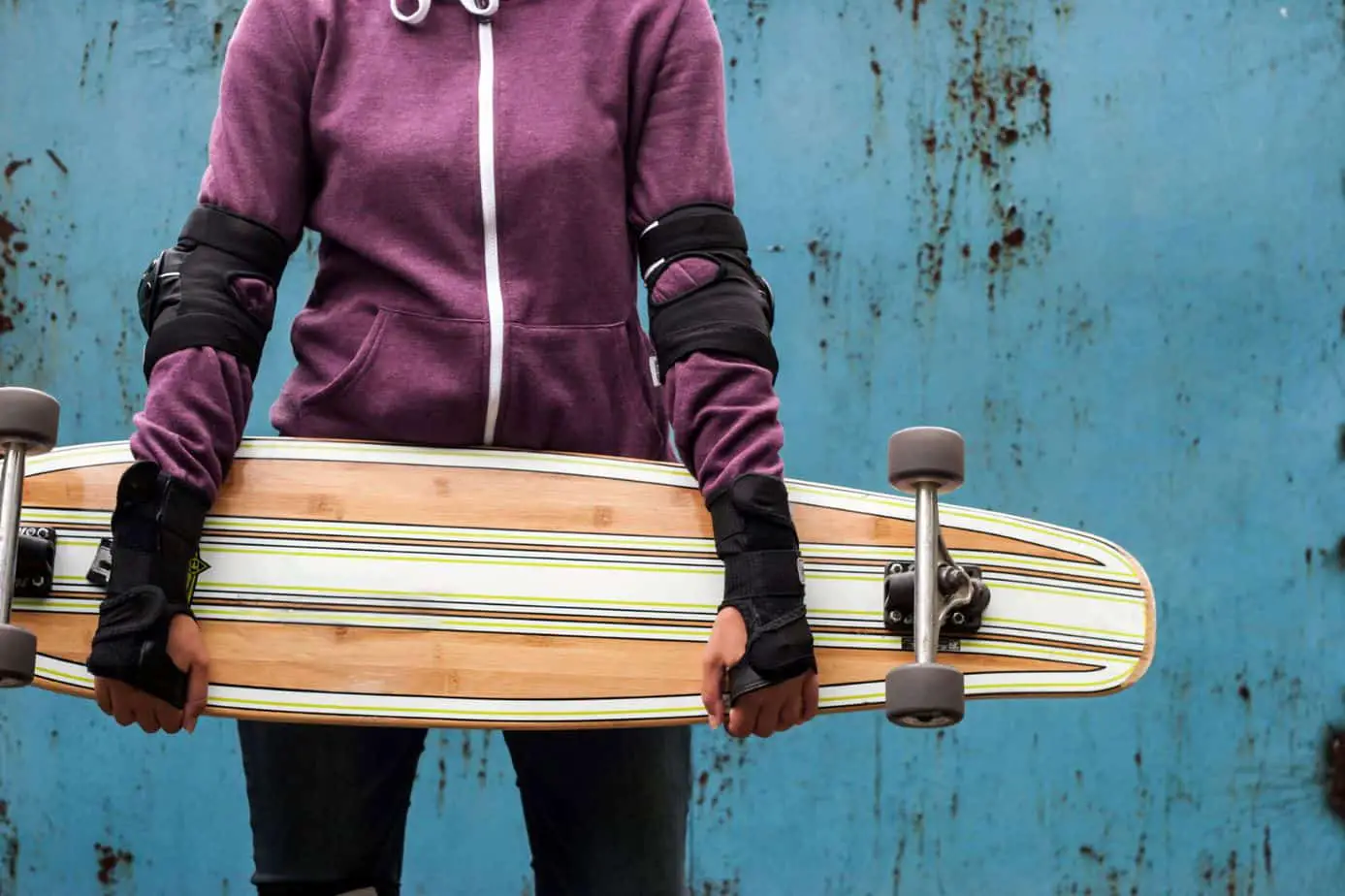Are you ready to start longboarding but have no clue which size longboard you need?
Before you start your journey, you should know that longboarding is a great sport and isn’t too hard to get the hang of, as many people will tell you, especially when compared to skateboarding, and this all comes down to the size and shape of the board.
It’s a given that a longer board with more surface area to balance on will have an easier learning curve than the traditional skateboard.
What size board you should buy comes down to a few things from your height, your riding style, down to the experience you are looking for. In this guide, we will do our best to summarize the longboard sizes and help you make the right buying decision as a beginner.
The Different Longboard Sizes
The rule of thumb with longboards is that the longer the board is, the more stable it will be. This makes for a smoother and more relaxed ride allowing you to pick up greater speeds due to its stability. The longest boards you will probably cross will be no more than 50” in length, not to say there aren’t longer boards available on the market. They simply are not recommended for beginners.
Mid-sized longboards: Ideal size for beginners
These range from around 32” to 42” in length and are most recommended for beginners. You’ll find most boards made for cruising and relaxed riding to be within this size range. They fall perfectly between long and short longboards, making it the perfect size range to get started with.
Short longboards: Ideal for younger riders
This range of longboards com no longer than 34” in length. These are used mostly by younger and shorter individuals. Short boards are more agile than the rest making it easier to take bends, hop curbs, and maneuver almost like a skateboard.
Beginners should know that buying the right longboard does not just come down to size, but other features such as the flex, which assesses the bendability of the board, or the type, which are categories designed for your usage purpose. Some are better designed for cruising, others for downhill riding, and some for convenience, such as the bamboo longboard, which is lighter than the rest, making it the ideal choice for regular commuters.
Choosing The Right Longboard For You
There are a few things you need to understand before you go ahead and purchase your first longboard. As mentioned earlier, the size of your board is not all that matters. You need to know about the other features to make the correct buying decision and save yourself from any regret later down the line.
We have already looked at the length of your longboard. Now let’s take a look at the width.
Deck Dimension
Thanks to the explanation earlier, it’s easy to explain deck dimension to you. Follow the same rule as thumb as you would with the length of the board. The wider the board, the more stable it will be. Typically, the widest boards come in at 9,” but there will always be competitors trying to leave a mark by going large like the Lush Longboard, which has an 11″ width. As a beginner, you’ll probably start with a wider board as it provides more stability which is important as a new rider.
Longboard Style – We’re not talking about appearance
Various longboard styles can become quite overwhelming. The most important thing you need to know is that longboard styles summarize maneuverability and stability. Some of the style names are pretty self-explanatory. As you can imagine, the Downhill longboards are designed for downhill riding, thanks to the board’s stiffness preventing it from wobbling and losing control on the fall.
Typically cruiser boards which are the starting point for beginners, are designed for smooth riding and, if you didn’t guess already, for cruising. These boards will come with big wheels allowing you to overcome obstacles with ease and providing you with the stability you need as a beginner.
As this article is not about longboard styles, we will leave it up to you to learn about all the different styles to assist you in choosing the right longboard. You should know that you do not need to look further than the cruiser style boards for your first purchase, as they have all the features you need to provide you with a smooth, enjoyable, and easy learning curve.
Keep in mind that where you live and the roads you will be riding also plays a big part in helping you select the right longboard. If you’re going to be longboarding hills and steep roads, you might want to look further than the cruiser board as you’ll require more stiffness. Let me explain the board flex a little more to you to help you understand its importance and how it greatly affects your riding style.
Board Flex – Soft, Medium, or Stiff?
Flex is the term that longboarders use to describe the bending of a deck. The flex is an indication of how stiff or flexible the board will be. The more flex the board has, the better it will absorb the shock caused by obstacles and bumps on the road. Stiffer boards, boards with little to no flex, provide the rider with more stability and are suggested for high-speed and downhill longboarding.
Flex can be important for riders on different skill levels. Riders who are still learning should look for boards with low flex because it provides more stability. However, once you become a little more comfortable at longboarding and make a habit of it, you might want to go for a board with higher flex as it will be easier on your legs, thanks to the shock absorption giving you longevity in this sport.
Longboard Shape – Fairly easy decision to make!
Longboards come in two different shapes as of now. People often confuse the longboard shape with the longboard style. This is why we consider it an easy decision to make. Longboard shapes come in two forms, direction and symmetrical.
The simple way to summarize both of them is that directional longboards are better for those looking to cruise or ride downhill, and symmetrical longboards are better suited for freestyle, which we’re sure a beginner will not want.
Is Choosing The Right Size Longboard Still Going to Be a Problem?
Do not overwhelm yourself with all of the options out there. Hopefully, you will have a clearer idea of what you need to look for when choosing the right longboard size with this guide. As a quick summary of what we discussed, we’d recommend you go with a mid-sized, directional longboard as a beginner or one that’s designed for cruising.
Thanks to the internet, you can take a Google search for “best longboard for beginner,” and the longboard brands can explain to you which of their board will better suit you. With everything you now know, you can make an informed buying decision.
Just know that a short longboard is not ideal for beginners, so please stick to boards within the 28″ to 42″ range if this will be your first time longboarding.
If this article was helpful, sign up for our Newsletter for more great content.

